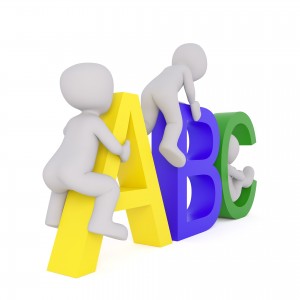
 I am currently working long-term as an English Language Learner teacher for first grade. I find myself constantly repeating my mantra, “It’s okay to be wrong!” These first-graders are so eager to learn, and with that drive comes the eagerness to always be right. Since I am super sensitive to this, I am extra careful with how I correct them when they need to fix something, especially since they are English Language Learners. I do not want them to feel any hesitation in speaking out or trying. Hence, my mantra that I find myself repeating dozens of times a day. I have actually heard children repeating it too, so I know they are hearing it, but are all students living by it?
I am currently working long-term as an English Language Learner teacher for first grade. I find myself constantly repeating my mantra, “It’s okay to be wrong!” These first-graders are so eager to learn, and with that drive comes the eagerness to always be right. Since I am super sensitive to this, I am extra careful with how I correct them when they need to fix something, especially since they are English Language Learners. I do not want them to feel any hesitation in speaking out or trying. Hence, my mantra that I find myself repeating dozens of times a day. I have actually heard children repeating it too, so I know they are hearing it, but are all students living by it?
When I substitute for a higher grade, and I ask them a mathematical or scientific question, usually the kids just stare at me and only a couple of students raise their hand (and it’s always the same ones). They are so afraid of being wrong. In a theatrical setting, if I asked these same questions, I am confident that a majority of the kids would feel less hindered since the focus would not be on the correct answer.
Actors and Scientists Are Expected to be Wrong Until Right
If you have any theatre experience, you understand how vigorous the rehearsal process is. There is no wrong or right. Everything about it is trial and error until tech week and the show is set. Scientists are also people who rely on trial and error in their line of work. Their theories are all wrong until they are proven to be correct.
Most educators are encouraging the experimentation process in their classrooms, but it is more challenging to do so with subjects like science and math. When I think back on my school days, the bottom line in my math and science classes was getting the correct answer. Some of us were so afraid of being wrong that we would not participate unless we were 100% certain we knew what we were doing.
However, I remember watching improvisation troupes that came to our school and performed assemblies as they taught us about various science subjects. They would call on kids to come up and participate in the lessons on stage with them. Everyone wanted to have a chance to go up on stage, or even be called on to answer a question. Why? The focus was not on being right. The focus was on having fun and collaborating.
Yes, and…
The first rule of improvisation is “yes, and…” This means that the group must follow the rule of being judgement-free. Anything goes when it comes to improvisation! All kids must support all answers and ideas. This encourages more kids, especially the reluctant ones, to participate. Once the group has built up trust, eventually the kids (even the introverted and introspective students) will be more comfortable in taking risks and they won’t be afraid to make mistakes. Fun fact: many actors and improvisation instructors are also introverts in daily life. When they are placed in the supportive environment of improvisational theatre, they prosper.
Improvisation does have educational value
 Improvisation helps all types of kids, even children with disabilities, improve their communication, oral, and social skills, and it excites them as they react, think, and pursue their ideas faster. It helps remove mental blocks and allows kids to be creative and spontaneous. Since the rules of improvisation foster a supportive environment, children grow to become more confident and are able to connect better with others and work as a team.
Improvisation helps all types of kids, even children with disabilities, improve their communication, oral, and social skills, and it excites them as they react, think, and pursue their ideas faster. It helps remove mental blocks and allows kids to be creative and spontaneous. Since the rules of improvisation foster a supportive environment, children grow to become more confident and are able to connect better with others and work as a team.
In Part Two, we’ll explore some improvisational activities that can be used to supplement a range of subjects and various lessons in the classroom.

 Random Item
Random Item